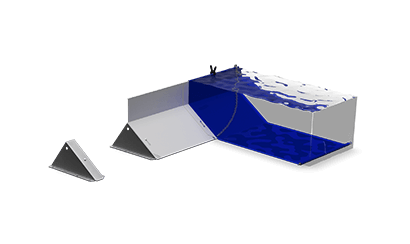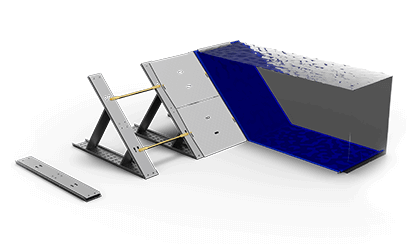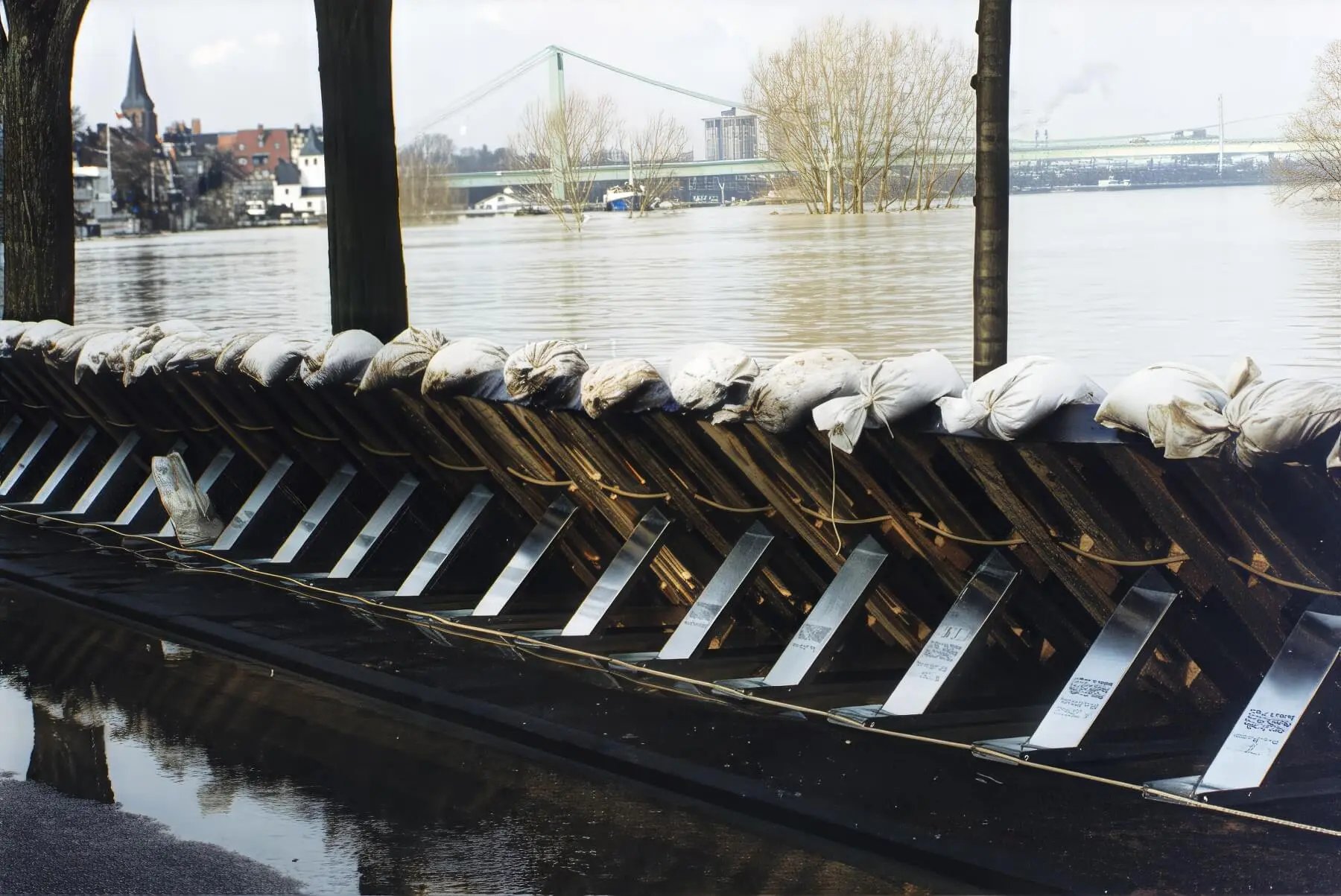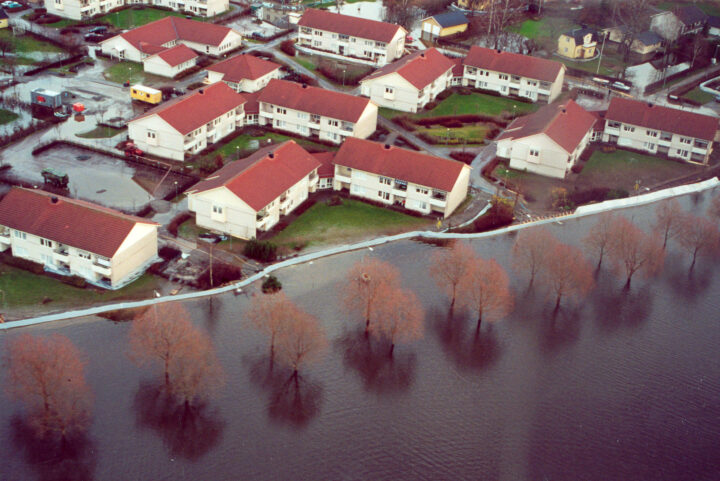Rising Waters, Rising Stakes
On 21 February 1999, the Hochwasserschutzzentrale issued urgent warnings. The Rhine’s surge showed no sign of slowing. Authorities knew they had mere hours to act. Permanent walls were impossible on such short notice. Sandbags were too slow and unreliable. The solution had to be strong, fast, and adaptable — a barrier that could be assembled in a matter of hours yet hold back the force of the river.
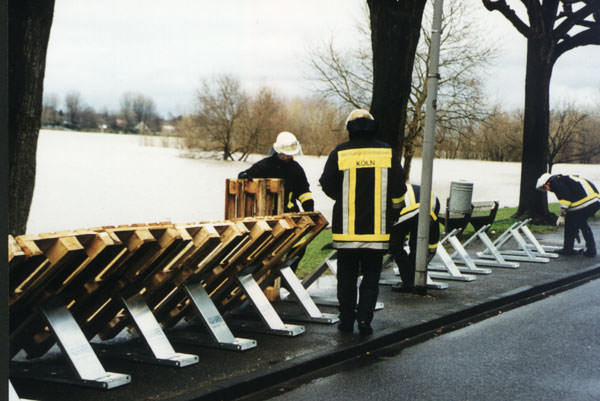
A Record-Breaking Response
By Monday morning, the city struck a deal with German sales agent RS Stepanek. By that afternoon, 650 metal supports, pallets, and membranes were delivered to Uferstrasse. The cold bit through gloves as 18 men worked in snowy, windy conditions, racing daylight. In just five hours, the line was complete — 500 metres of flood barrier standing firm against the approaching waters. It was a record for speed and scale, the likes of which Cologne had never seen.
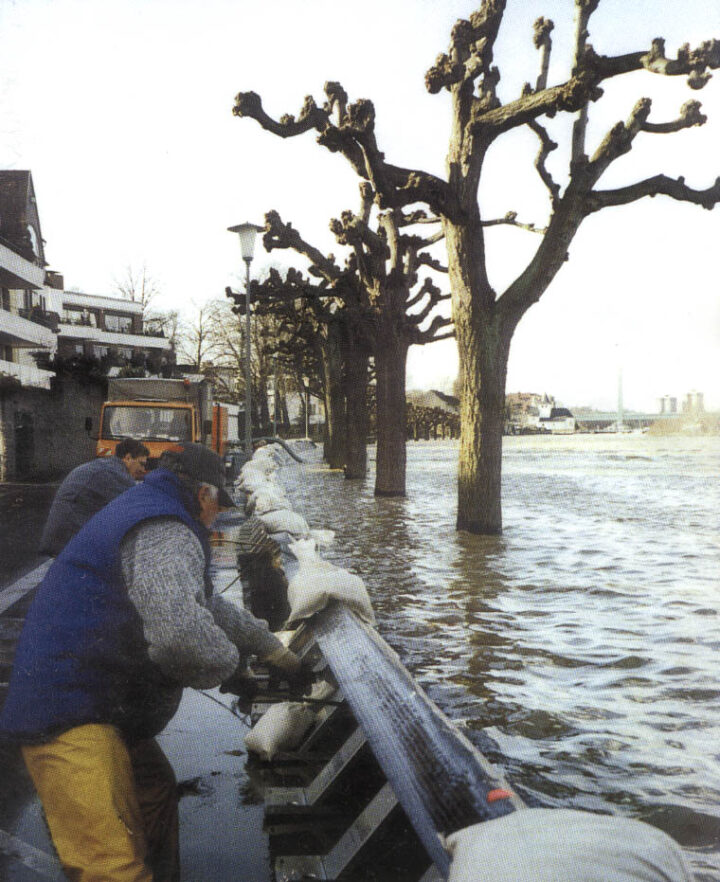
The People Behind the Wall
The operation brought together an extraordinary alliance: the City of Cologne, Technisches Hilfswerk (Germany’s federal disaster relief agency), and the citizen-led Bürgerinitiative Hochwasser. Police cordoned off streets while residents and volunteers kept watch. For those who had lived through countless floods, this wall was more than steel and membrane — it was a statement that the city would no longer yield so easily to the river.

Holding the Line
For 95 hours, from 23–26 February, the barrier stood firm, with only minimal leakage. Behind it lay homes, shops, and offices that would have otherwise faced catastrophic loss. Millions of euros in damage were prevented. More importantly, hope was restored. In Rodenkirchen, this was the first time floodwaters had been stopped so decisively.
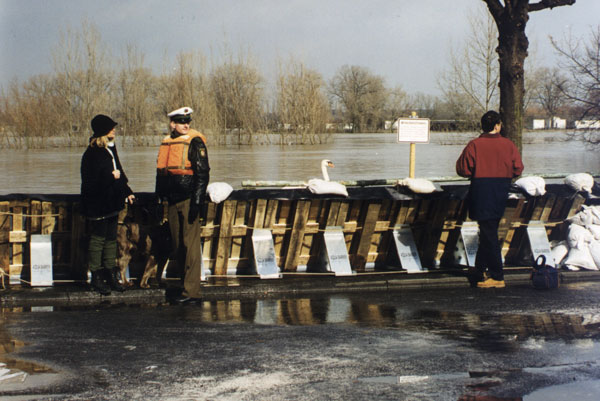
Legacy of a Historic Defence
This event proved that temporary flood barriers could protect entire districts without years of construction. Unlike sandbags, they could be deployed quickly, reused, and adapted to the terrain. The success in Cologne would inspire similar strategies in cities worldwide, changing how communities prepare for and respond to floods.
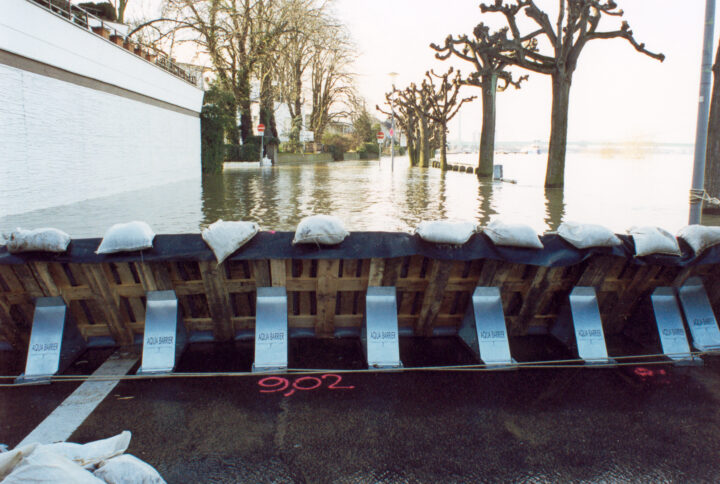
Cologne 1999 remains a benchmark:
- Length protected: 500 metres
- Deployment time: 5 hours
- Team size: 18 people
- Duration of use: 95 hours
- Outcome: Millions saved in potential damage
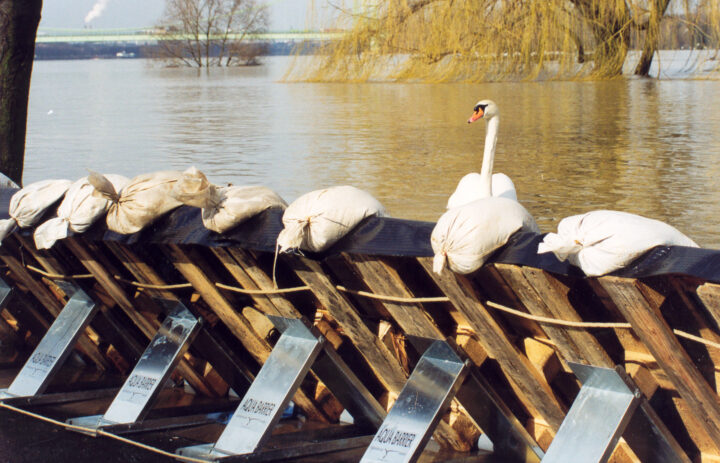
Conclusion
The winter of 1999 will be remembered not only for the Rhine’s relentless rise, but for the day Cologne stood its ground. In a race against time, technology, coordination, and determination came together to rewrite the city’s flood story. And in that victory, a model for modern flood defence was born.
